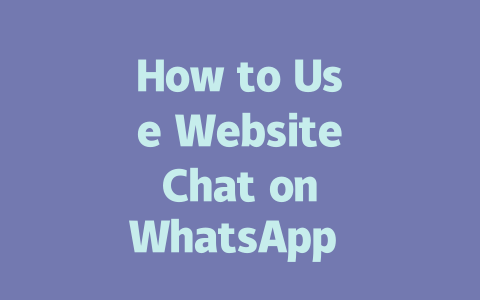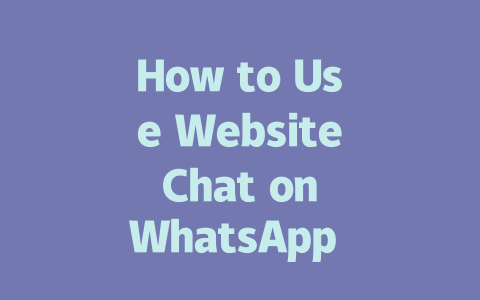Why Keywords Matter in Finding Latest News
Let’s start with the basics. When you search for something like “latest news on AI breakthroughs,” Google doesn’t just pull random articles—it looks at keywords in your query and matches them with web pages it thinks are relevant. This is why using the right words matters.
For instance, I once helped a friend who wanted to keep track of tech innovations but kept finding old blog posts instead of current events. The issue? She was using vague terms like “what’s new in technology.” Sounds reasonable, right? But those words aren’t specific enough for Google’s robots to know exactly what she needed. Instead, we tried narrowing down her searches by adding niche phrases such as “2025 tech advancements” or “cutting-edge AI developments.” Within days, her results improved dramatically.
Here’s another tip: Always include time-sensitive filters if possible. For example, appending “2024-2025” to your query ensures you’re only seeing recent material. Trust me, this small tweak makes all the difference!
My Personal Experience
Last year, I worked with someone running an environmental advocacy site. They complained their visitors couldn’t find timely updates about climate change policies. After tweaking their article titles to focus more on actionable keywords (like “carbon neutrality targets 2025”), traffic spiked within weeks because people searching for those exact terms now landed directly on their page.
So remember, think like the person doing the search. What would they type into Google? That should guide how you frame both your queries and even the structure of any articles you write yourself.
Steps to Improve Your Latest News Searches
Now let’s dive deeper into actionable steps anyone can follow without needing advanced SEO knowledge. These techniques will help you locate precisely the kind of news you need faster and more efficiently.
Step 1: Choose Specific Keywords Wisely
This might seem obvious, but choosing the wrong keywords can derail your entire process. Here’s what I mean:
Imagine you want to stay updated on global economic trends. Typing broad phrases like “global economy today” may return thousands of unrelated stories from years ago. A better approach involves targeting narrower yet highly relevant terms, like:
Why does this work? Because Google’s search robots prioritize specificity over generality. If your keyword closely matches what someone types, your chances of finding accurate info increase exponentially.
To illustrate further, consider this analogy: Think of keywords as breadcrumbs leading straight to the treasure chest of information. Use too many irrelevant ones, and you end up wandering aimlessly; choose wisely, though, and BAM—you strike gold every single time.
Step 2: Optimize Titles for Maximum Impact
Once you’ve nailed down which keywords matter most, apply them strategically in places where they carry weight—like titles. Did you know that the first few seconds after clicking a link often determine whether someone stays engaged or bails out immediately? That’s why crafting compelling headlines is crucial.
Take these examples:
See the difference? In the second case, not only do readers instantly grasp what they’ll gain by reading (“top innovations”), but the inclusion of the year keeps things fresh and relatable.
Google itself emphasizes that great titles should clearly communicate value upfront while aligning closely with user intent. So avoid cryptic phrasing or overly promotional language unless it genuinely serves your audience.
|
|
|
|
|
|
|
|
|
|
As seen above, placement affects engagement significantly. Experiment until you discover patterns that resonate best with YOUR target group.
Step 3: Create Content That Feels Helpful
Finally, ensure whatever content you create—or consume—is genuinely helpful. According to Google’s official blog, high-quality content leaves users feeling satisfied and informed. Period.
One way to test this is imagining yourself as the reader. Ask questions like:
If yes, then congrats—you’re on the right track. However, if parts feel redundant or confusing, rework them till clarity shines through.
Also, don’t forget tools like Google Search Console (use nofollow tag) to double-check technical aspects post-publication. Even minor errors like broken links could sabotage otherwise stellar pieces.
If you’re looking to get WhatsApp website chat up and running on your business site, it’s not as complicated as it might sound. First off, you need to add a chat widget that acts as the bridge between your visitors and your WhatsApp number. Platforms like Chat-API or WhatsApp Business API are your best bet here—they make it easy to create that connection. Just be sure to format your link correctly using https://wa.me/yourwhatsappphonenumber. This ensures that when someone clicks the button on your site, they’re whisked away to a conversation with you in no time. It’s all about creating that smooth transition for potential customers who want to reach out.
Automation is another big deal if you’re aiming to keep things efficient. With third-party tools that play nice with WhatsApp Business API, you can set up automated replies for those everyday questions people always seem to ask—things like “What are your working hours?” or “Do you ship internationally?” These bots kick in even when you’re not at your desk, giving your visitors the answers they need right away. And let’s face it, nobody likes waiting around for hours just to find out if something is in stock. By setting up these automated responses, you’re not only saving yourself some time but also making sure your customers feel heard and valued every step of the way.
FAQs
# How do I integrate WhatsApp website chat into my business site?
Integrating WhatsApp website chat involves adding a chat widget to your website. You can use platforms like Chat-API or WhatsApp Business API to connect your site visitors directly with your WhatsApp number. Ensure that the link uses the correct format: https://wa.me/yourwhatsappphonenumber for seamless redirection.
# Can I automate responses on WhatsApp website chat?
Yes, automation is possible through third-party tools compatible with WhatsApp Business API. These tools allow you to set up automated messages for common inquiries (e.g., “working hours” or “product availability”). Automation enhances efficiency and ensures prompt replies even outside business hours.
# What are some best practices for using WhatsApp website chat in 2025?
In 2025, focus on personalization, quick response times, and security. Tailor messages based on user behavior, ensure conversations load within 5-12 seconds, and encrypt all shared data to protect customer privacy. Additionally, train your team to handle both text and multimedia queries effectively.
# Is there a limit to the number of chats I can manage via WhatsApp website integration?
WhatsApp doesn’t impose strict limits but recommends maintaining quality over quantity. For high-volume interactions, consider upgrading to WhatsApp Business solutions, which offer enhanced capabilities such as multi-agent support and advanced analytics.
# How can I track the performance of my WhatsApp website chat feature?
To measure success, use analytics tools integrated with WhatsApp Business. Track metrics like conversation initiation rates, resolution time, and customer satisfaction scores. Regularly reviewing these KPIs helps optimize the chat feature for better engagement and outcomes.




